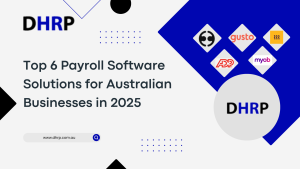You’ve finally taken the step of bringing your payroll system into the modern era, and to say you have some questions is an understatement. We understand that it’s impossible to know where point A is, let alone Z. Furthermore, depending on your needs, there is a great deal to study and grasp about client onboarding.
There is a lot to handle, and you’ll need the proper provider to provide the most rapid payroll implementation procedure. So, do you understand the process and are eager to take a step? If so, let’s get some homework done before we get started.
Avoiding common errors, like neglecting data accuracy or underestimating employee training, is vital to ensure a smooth transition. For more insights, explore the 5 common mistakes to avoid in Payroll software implementation.
What is Client Onboarding?
Client onboarding refers to the process of coaching new consumers through the early stages of using your product or service. It focuses on ensuring that clients understand how to use the product, preparing them for success from the start. Effective onboarding is critical since it sets the tone for the customer’s whole experience with your organisation.
A well-executed onboarding process allows clients to quickly realise the value of your product, perhaps leading to long-term loyalty.
Client onboarding extends beyond introductions to help clients grasp the company’s culture, beliefs, and procedures. Effective onboarding involves:
- Developing rapport and mutual respect.
- Encourages frank communication.
- Clarifying expectations and milestones.
- Educating clients on resources
- Setting the stage for successful teamwork.
- All of this is only possible with the right and most scalable single-touch payroll system.
Steps To Get Payroll Software Implementation Right For Smooth Client Onboarding
While changing the payroll system, evaluating whether your current provider truly meets your requirements is essential. Sticking with an unsatisfactory provider can result in hidden costs, compliance risks, and a poor employee experience.
When considering all the data involved in changing payroll providers, you may worry about losing sensitive information, penalties for errors, or other challenges. However, understanding your expectations and partnering with the right payroll implementation specialist can provide your staff with a seamless transition and the best experience.
This brings you to your first step.
Choose the Right Payroll System
When choosing a payroll system, you need to keep in mind the scalability, compliance features, and integration capabilities. A carefully selected payroll system for small businesses can significantly improve the onboarding process. Its automated features can ensure a simple tax collection process and data integrity.
Before the implementation process, the primary question is often, “Which payroll software is the best fit?” To simplify this decision, explore comparisons like DHRP vs Employment Hero, DHRP vs Roubler, and KeyPay vs DHRP to identify the optimal solution tailored to your requirements.
Choose payroll software like the Dynamics 365 payroll module, which provides flexible onboarding workflows to meet your organisation’s specific requirements.
Define Goals and Set Target Dates
Setting a timeframe and goals is a critical aspect of successful implementation. After you’ve done your research and chosen a vendor, you’ll need a clear road map to help you reach your ultimate goal: a successful first payroll with your new system.
Developing a project road plan should be a collaborative effort between you and your Dynamics 365 payroll consultant.
- Consult with your vendor about their recommended timeline.
- Begin with your planned first payroll date and move backwards, adjusting for any circumstances that may affect the timeframe, such as other company system updates or events that will place a strain on employees' time.
- It is a good idea to budget extra time to account for unexpected situations, which will occur in most implementations.
Create an Implementation Plan and Team
You should assign one payroll or HR team member with good project management abilities to lead the implementation. Depending on your company’s size, extra persons may be involved in the installation.
To ensure that the payroll implementation steps run smoothly and transparently, schedule a meeting with key project participants to explain the new system. Now, see if you can collect payment information upfront in your proposal, eliminating the need for anyone to worry about paying or receiving payment again.
For example, a manager in charge of hiring and onboarding may need to check that the necessary documentation is in place in your new system before testing specific functionalities.
Accuracy Review
Once all major parts are in place, you and your implementation project manager will double-check your setup to ensure accuracy. If you believe your solution isn’t as robust as you planned, you can add more services here.
You will have the opportunity to test the system before it goes live. Your vendor’s team does parallel testing to ensure that our system results match those from your legacy system, considering any service additions.
This helps ensure the system is correctly configured, and all data is correct. They will cross-reference all pertinent information for verification and delivery.
Testing and Launching
While consultants will perform initial testing during system configuration, your in-house team must be confident with the final outcomes. Remember, the ultimate approval should come from someone inside your organisation who understands the complexities of your business.
Conduct at least two concurrent runs to compare outputs from the old and new systems. This aids in identifying differences and ensuring that both systems produce the same results. If there is a mismatch, it is critical to determine the cause before proceeding.
If all is clear, you can now prepare to launch.
Conclusion
Successful payroll software implementation is vital to efficient client onboarding and employee satisfaction. With the guidance of a payroll implementation specialist, businesses can streamline the process, ensuring accuracy and compliance while minimising disruptions.
Partnering with a reliable provider like DHRP simplifies the journey, offering tailored solutions like the Dynamics 365 payroll module and payroll add-ons to meet organisational needs. From choosing the right system to thorough testing, every step is crucial for a seamless transition. By investing in the right tools and expertise, businesses can foster smoother operations and long-term growth with confidence.
For more insights, don’t forget to check out the Australian Payroll FAQs 2024 to stay updated on best practices and compliance.




































































































